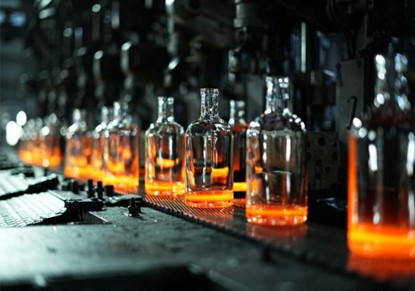We use cookies to operate this website and to improve its usability. Full details of what cookies are, why we use them and how you can manage them can be found by reading our Privacy & Cookies page. Please note that by using this site you are consenting to the use of cookies.
Beverage
HOT’N’COLD
2017-06-12
The range of drinks keeps growing: iced tea, energy drinks, mineral water, lemonades, smoothies, juices – the list can be continued endlessly. What matters to a manufacturer is not just the consumer who eventually buys the product, but also the preceding stages, including, above all, competent, forward-looking partners who handle the bottling and ensure that the drinks become marketable.
BOTTLED HOT – ENJOYED ICE-COLD
One example is KHS GmbH, a company which recently upgraded a production plant forCoca-Cola in South Africa, fitting it out with the latest equipment. The plant is one of the biggest worldwide, bottling around 350 million litres of beverages each year. KHS equipment is particularly suited for juices with pulp content, as they cannot usually be handled by conventional PET bottling lines. It is important not to damage the sensitive pulp during the bottling process, yet the dosing tolerances are quite low.
.png)
To solve this dilemma, KHS has developed a process that uses two volumetric precision bottling machines. First, the fruit pieces are filled into the bottles with a small amount of juice, and the remaining liquid is then added at the second stage.
Juices and juice-based drinks must be treated with gentleness and must be bottled in a hygienically superior environment.The entire process involves so-called hot-fill bottling, whereby the content is heated to a temperature above 100°C. Once the product has cooled down to 83°C, it is ready to be poured into specially designed bottles. To withstand a bottling temperature of 80 to 90°C, the special bottles are made in a stretch-blowing process and boast a high level of thermal stability and crystallinity. Heating ensures that no microorganisms can survive, thus warranting good hygiene and a long shelf life.
.jpg)
One brand-new method is nitro hotfill bottling, which was used by Krones for the Turkish tea manufacturers DoğuşÇay this year. It has the advantage of saving compressed air. Just before the bottle is sealed, a dose of nitrogen is injected, adding pressure to the bottle. This positive bottle pressure then compensates for volume shrinkage after the heat exchanger and prevents any deformation of the bottle, caused by a vacuum. As a result, there is no need for a panel design, which has so far been applied to compensate for the vacuum pressure caused by hot-filled products. The process also allows the use of aluminiummoulds and drastically reduces the amount of air required by the equipment.
.png)
COLD BOTTLING
Highly sensitive liquids such as juices require special hygiene precautions. As an alternative to hot-filling, which kills any possible germs with heat, it is also possible to fill liquids into bottles while cold. However, this means ensuring that the environment is totally germ-free throughout the bottling process. For several years now a process has been used that is known as cold aseptic and which has proved to be a viable alternative to the hot filling of fruit juices and fruit juice beverages into disposable PET bottles and cartons. The pasteurised juice is re-cooled to below 20°C and then bottled into sterile packaging under sterile conditions. The process requires less energy and is cheaper, but a cold aseptic bottling plant involves high investment costs, so that it only pays off for large volumes and is therefore only attractive to a small number of manufacturers.







